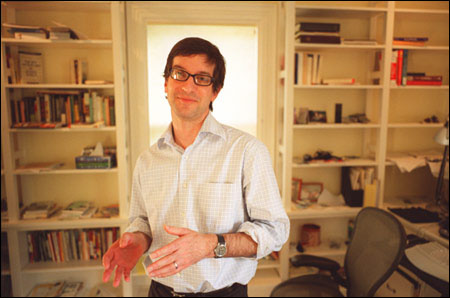How to save money effectively
Harvard economists show people save more under deadline

Many of us save too little, but that seems to be a character flaw we can live with.
Studies have shown that we’re pretty good at figuring out how much we should be saving, and that many of us say we want to do better. But somehow that financially responsible tomorrow never seems to come.
But it may be on the way. Harvard and University of Pennsylvania economists have come up with a way to puncture our “there’s always tomorrow” approach to savings with a scheme that doubles savings rates and plan participation rates at work.
The answer, it seems, is a simple deadline and the need to make a yes-or-no decision. Not forced participation or a predesignated savings rate, though automatic savings plans are an improvement over plans with no incentives at all. The magic bullet is simply telling people that they have to decide whether to participate in a retirement savings plan by a particular date.
And an overwhelming majority do.
In research sponsored by the National Institute on Aging and conducted by Harvard Economics Professor David Laibson and graduate student James Choi, and University of Pennsylvania economists Brigitte Madrian and Andrew Metrick, new employees hired between January and July 1997 at a large, national insurance company were given a month to decide whether or not to enroll in the company’s 401(k) plan.
Unlike many plans, though, they weren’t allowed to merely do nothing and have that inactivity pass as a decision not to start saving. Within 30 days, they were forced to actively decide yes, they were going to start saving, or no, they were not going to start saving. Those who enrolled also had to decide how much to put away.
The program expired at the end of September 1997, when a standard enrollment plan took effect, in which employees were informed of the company’s plan and were left on their own to decide whether to participate or not.
When the active decision program ended, 401(k) participation dropped by roughly half, and savings rates fell by about a third, Laibson said.
“It’s a night and day difference in their savings behavior,” Laibson said.
Traditional economic theory would have predicted no difference in behavior, Laibson said, because traditional theory assumes everyone rationally acts in their own best interest. Therefore, if people perceive a particular savings rate to be most desirable, gimmicks like deadlines shouldn’t change saving behavior.
But Laibson, whose work examines economic behavior through the lens of psychology, said people don’t always behave perfectly rationally.
“People do seem to be remarkably easily influenced by seemingly extraneous factors, so their internal compass must not be very strong,” Laibson said.
Laibson cited an earlier study of 100 employees’ savings behavior. Of them, 68 said they thought they weren’t saving enough. Of the 68, 28 said they planned to increase their 401(k) savings within two months. In the next four months, just three did.
“People think they want to save. People say they want to save. People give rational savings rates. People get around to it, but not for years,” Laibson said.
The key to this puzzling behavior is that people engage in what Laibson calls “passive decision making,” or in other words, procrastinating. By not making a decision, Laibson said, people are making decisions all the time that favor the status quo.
Human resources departments around the country are trying to design savings vehicles to help people save. One alternative to the standard plan that leaves decision making in the hands of employees is the automatic plan, where employees are enrolled unless they actively opt out by telling human resources they don’t want to participate.
Laibson said studies of these automatic plans show that they are successful in dramatically increasing the number of people who participate.
But because they have a low automatic savings rate, these plans don’t tend to increase the total dollars saved, Laibson said. One study showed that the total dollars saved was about the same as that of a standard plan, even though participation had almost doubled.
Laibson said the “active decision” plan tried out by him and his colleagues could prove a useful tool in increasing savings rates. Because the active decision plan forces individuals to make savings decisions, it may be best in diverse workplaces where a one-size-fits-all savings plan won’t work, where people are prone to procrastinate, and in places where forcing a decision doesn’t force a bad decision.
“We want to only use this in the right circumstances,” Laibson said.




